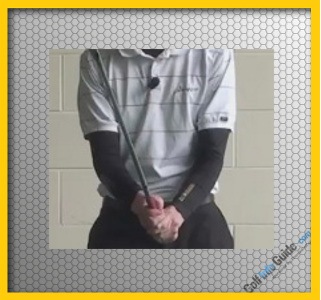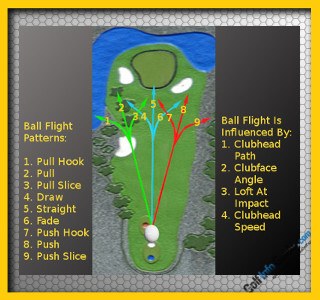- How hard should I swing? This is a common question, if only because most golfers want to hit the ball as far as possible when first getting started. While the desire for distance is understandable, it is far more important to learn how to hit the ball cleanly. If you can strike the ball cleanly time after time, you will find that this game gets much easier in a hurry. Even if you aren’t a long hitter, you can conquer just about any course with solid ball striking. With that in mind, you don’t want to swing particularly hard, especially if you are a new golfer. As a good rule of thumb, you should swing at about 80% effort on an average shot. This level of effort will let you maintain your balance relatively easily, no matter what club you are holding. With experience, you may be able to swing harder down the line, but save those aggressive swings for a later date. While you are still learning, control your effort level and focus instead of executing your mechanics perfectly.
- How far back should I swing? Again, this one comes down to distance. Most golfers assume that they need to make a long backswing in order to hit the ball a significant distance. So, they try to swing way back, and they wind up losing balance as a result. The best answer to this question is that you should swing back as far as you can without losing balance. It is helpful to make a relatively long swing, but only so long as that swing doesn’t knock you off balance prior to starting the downswing. With some practice, you should be able to find a sweet spot where you are able to make a long enough swing and still keep control of your weight throughout the action.
- Should I hit up on the ball at impact? Usually, the answer to this question is no, with one notable exception. When hitting an iron shot from the fairway, for example, you certainly don’t want to be hitting up on the ball. Rather, you want to be hitting down through impact aggressively. With fairway woods and hybrid clubs, you can shallow out your angle of impact, but you still don’t want to be hitting up. The only time you are going to be hitting up on the ball at impact is when you are hitting your driver from the tee. In that case, will want to hit up slightly in order to achieve the ideal launch angle. To hit up successfully, place the ball up near the front of your stance and then keep your weight centered throughout the swing. When done properly, hitting slightly up through the ball will result is a launch that features relatively low spin but enough height to carry the shot well down the fairway.
- How tightly should I hold onto the grip? You are going to be tempted to squeeze tightly on the handle of the club while you make a swing. This is a natural reaction to the feeling that you need to keep control of the club when it moves through the hitting area. And, to be sure, you want to maintain control of the club at all times when hitting a shot. However, don’t not need an excessively tight grip to handle the club successfully. On the contrary, you can hold onto the club with a relatively light grip and still hit beautiful shots. You should be holding the club tight enough to keep it in your hands through impact, but no tighter. To learn what it feels like to hold the club with an appropriate amount of grip pressure, start with some pitch shots and use a light grip. As you get comfortable with your lighter grip, work your way up to longer and longer swings.
- How many ball flights should I use? When you watch golf on TV, you see professional golfers using a variety of ball flights to make their way around the course. They might hit a fade off the tee and then a draw into the green, with those decisions made based on the circumstances they are facing. So, should you try to play the same kind of game? Probably not. It would be a much better idea to master one single ball flight before expanding your game from that point. For instance, you may decide that you are comfortable hitting a little fade with most of your clubs. For now, stick with that fade, and use it for every single shot you hit. It won’t always be the perfect shot for the situation at hand, but you should be able to find a way to make it work. Then, as you continue to develop your skills, you can start to work in some draws on the driving range. Before long, you will have added a new shot to your game, and you will be a better golfer for the effort. Make no mistake, it is important to have diversity in your game. You just don’t want to seek out that diversity too early in the development of your game, or you might slow down your overall growth on the course.
New golfers tend to have more questions about the full swing than any other part of the game. This should not be too surprising, as the swing itself is easily the most intimidating part of learning how to play golf. In this section, we are going to highlight a few common full swing questions, along with their answers.





The list of questions related to the full swing could go on and on, but those listed above are a great place to start. Generally speaking, the instruction you will receive on the full swing is going to talk about keeping things simple. Many golfers overcomplicate their technique, and they make the game nearly impossible as a result. Golf is a hard game, and it gets even harder when you complicate things through the use of many different techniques. Boil the game down to the basics when working on your full swing and you will be better off in the end.





